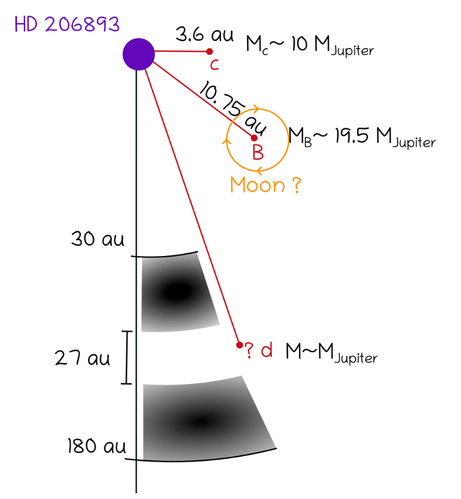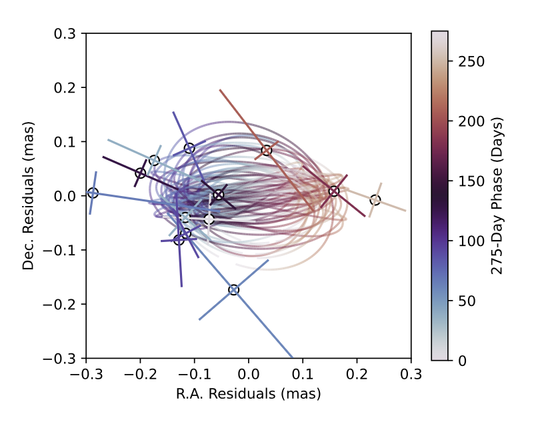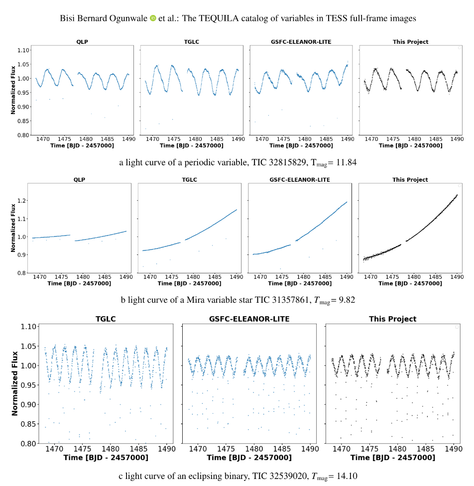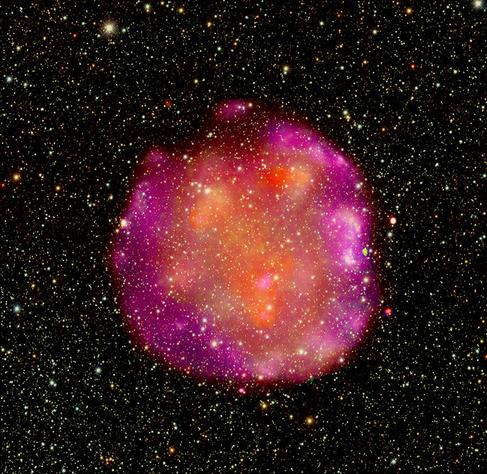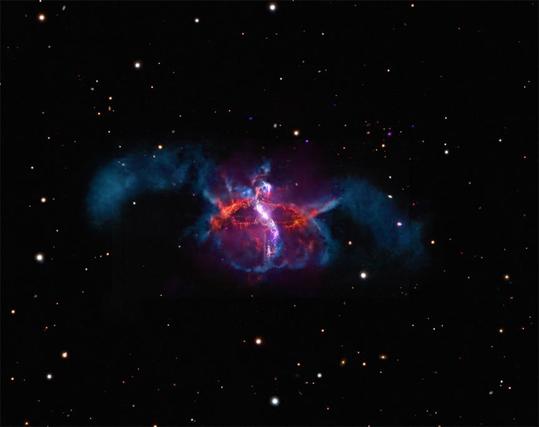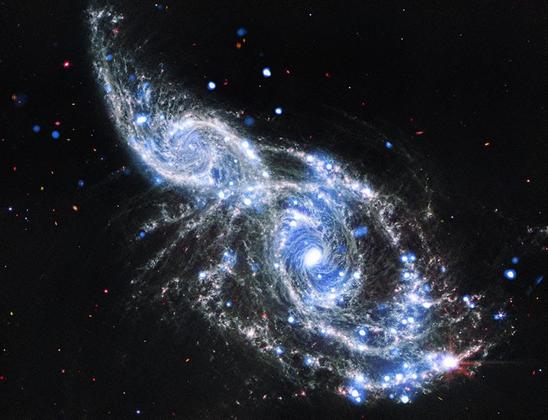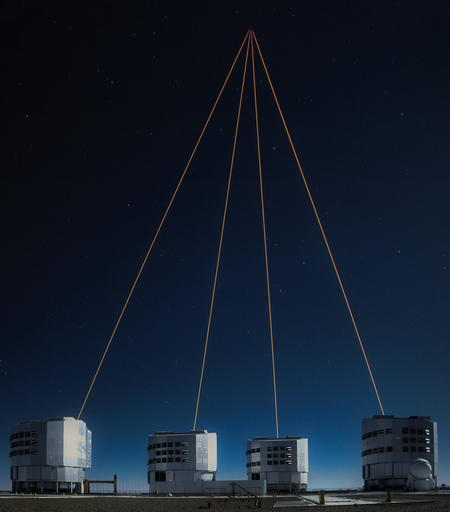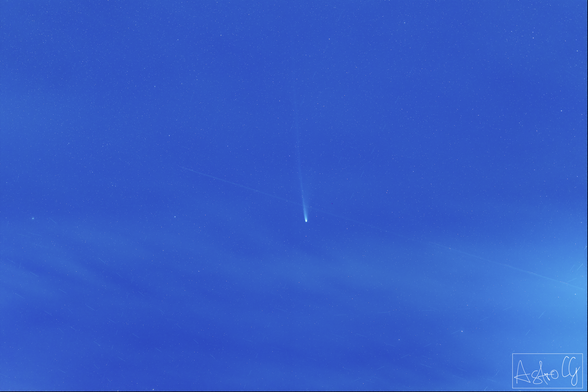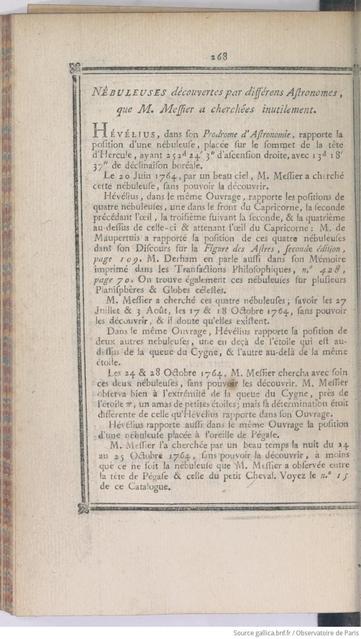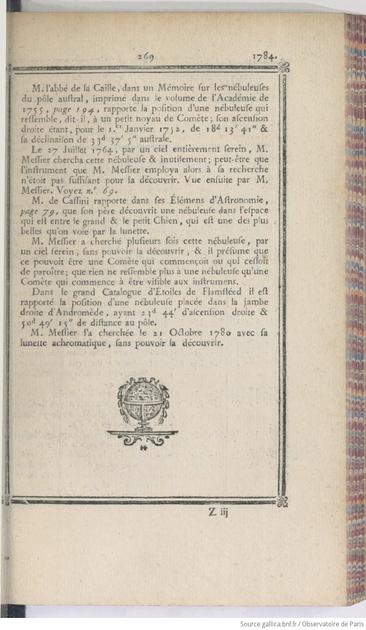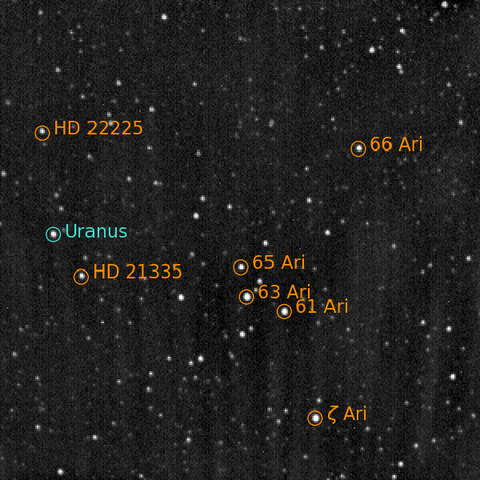A new paper by Yuan et al. has cited REBOUND:
Systematics and refinement of the Neptune ephemeris: Leveraging Gaia FPR and 42-year stellar occultation astrometry with an independent Triton orbit update https://ui.adsabs.harvard.edu/abs/2025A&A...703A.195Y/abstract #nbody #astrodon
#astrodon
A new paper by Smallwood et al. has cited REBOUND:
The polar debris disc around 99 Herculis: A potential signpost for polar circumbinary planets https://ui.adsabs.harvard.edu/abs/2025MNRAS.tmp.1908S/abstract #nbody #astrodon
A new paper by Lin et al. has cited REBOUND:
Creating Pileups of Eccentric Planet Pairs Wide of Mean Motion Resonances through Divergent Migration https://ui.adsabs.harvard.edu/abs/2025ApJ...994..123L/abstract #nbody #astrodon
A very exciting paper by Kral et al. on “Exomoon search with VLTI/GRAVITY around the substellar companion HD 206893 B” using astrometric measurements of the companion to search for a putative #exomoon. Half a Jupiter mass at 0.22 au maaaaybe? We’re getting closer! #astrodon #astrosci #exoplanets https://arxiv.org/abs/2511.20091
2/2
Nebula N159 - Stellar Nursery - NASA/ESA JWST Space Telescope
Full size 10K image: https://flic.kr/p/2rHmEwm
Credit: NASA/ESA/CSA/STScI/j. Roger/Andrea Luck CC BY
1/2
Nebula N159 - Stellar Nursery - NASA/ESA JWST Space Telescope
Full size & info: https://flic.kr/p/2rHucEs
Full size 10K image: https://flic.kr/p/2rHmEwm
Credit: NASA/ESA/CSA/STScI/j. Roger/Andrea Luck CC BY
NASA/ESA JWST Webb Space Telescope
Instrument: NIRCAM
Time: 2024-11-20
Target:LHA-120-N-159-NIRCam
PI: 5114
PI: Elena Sabbi
PI Institution: NOIRLab - Gemini North (HI)
Filters: f115w, f140m, f187n, f210m, f300m, f335m, f460m
This #TESStuesday, it looks like a new high-level science product (HLSP) for TESS is coming to MAST soon: TEQUILA, by Ogunwale et al. 🌵
https://arxiv.org/abs/2511.19313
This looks like a surprisingly simple but effective differential imaging + simple aperture photometry pipeline. Light curves aren't available yet so I'll be watching out to maybe have a look for some red giants to see how it fares with solar like oscillators.
RE: https://mastodon.online/@cplberry/115577894655909992
I think these articles are great examples of science journalism—not all science is clear cut. Sometimes results are inconclusive. The mystery can dive us on to collect more data to figure things out. Much of being a scientist is not making breakthroughs, but wondering why that odd thing happened?
Chandra's Fall Collection 🍂
A quartet of images that invoke themes associated with autumn
1. NGC 6334 nebula: Cosmic leaves blowing
2. SNR G272.2-03.2: The Space Pumpkin
3. R Aquarii: A cosmic sweater
4. NGC 2207 and IC 2163: A pair of galactic cornucucopia
https://chandra.harvard.edu/photo/2025/fall/
#Chandra #ChandraObservatory #astronomy #astrophysics #astrodon #galaxies #space #science
Catch up on our #GWTC4 results with the recording of our webinar introducing our latest gravitational-wave catalog release and the associated data (papers arxiv.org/abs/2508.18080 and arxiv.org/abs/2508.18079)
Mars-bound ESCAPADE mission captures first selfies
One of the two #ESCAPADE spacecraft used its Visible and Infrared Observation System (VISIONS) cameras to capture images showing part of a solar panel, showing the cameras are working well.
Everything is better with lasers.
https://mastodon.social/@esoastronomy/115609280601422206
1/ A telescope fist bump in the sky 🤜 🤛
Only by working together can our Unit Telescopes become the Very Large Telescope Interferometer. By combining the light, the VLTI obtains the level of detail of a huge 130 m virtual telescope. Yet this requires correcting the effects of Earth’s atmosphere. So, new lasers were installed in the previously unequipped UTs as part of the GRAVITY+ upgrade.
More: https://www.eso.org/public/images/potw2547a/
📷 J. Beltrán/ESO
Ok, it took me some time to get back to it, but as promised, I got around to wrap up a blogpost and share the stacked image of comet A6 Lemmon (which I took at the beginning of this month) - more details and images here:
https://www.astrocg.de/index.php/2025/11/24/photographing-a-comet/
(site is still work in progress)
Spinning into the merging binary black hole family tree
https://astrobites.org/2025/11/21/gw-hierarchical-merger/ by Neev Shah
Astrobites report on the potential implications of our discovery of #GW241011 and #GW241110
Ein Jahr nach meiner Weitwinkelaufnahme der Plejaden habe ich den Sternhaufen erneut mit engerem Bildausschnitt fotografiert. Die feinen Strukturen der blauen Reflexionsnebel kommen jetzt deutlich besser zur Geltung – filigrane Staubfilamente, Bögen und zarte Wolken rund um die heißen jungen Sterne.
https://adfr.io/astro/20251122_m45/
#astrophotography
#astrophoto
#astrodon
#deepsky
#astronomy
#deepskyphotography
#cosmos
Cosmography archives
Nêbuleuses découvertes par différens Astronomes, que M. Messier a cherchées inutilement.
Connoissance des Temps, ou Connoissance des Mouvemens Célestes, Pour l'Année bissextile 1784, pp 268-269.
https://gallica.bnf.fr/ark:/12148/bpt6k6514280n
#Cosmography #CosmographyArchives #Messier #nebulae #ConnoissancedesTemps #astronomy #astrodon #archives #history #HistoryOfScience #Hevelius #LaCaille #Cassini #Flamsteed #astronmer #astronomers #science
25 Years of Gemini Part I: The Origin of the International Gemini Observatory
How a bold international collaboration launched an ambitious project to create the next generation of world-class 8-meter telescopes
https://noirlab.edu/public/blog/origin-international-gemini-observatory/
#Gemeni #GemeniObservatory #Maunakea #telescope #telescopes #science #astronomy #astrodon #hawaii
NASA’s Europa Clipper captured this image of a starfield - and the planet Uranus - on Nov. 5, 2025, while experimenting with one of its 2 stellar reference units. These star-tracking cameras are used for maintaining spacecraft orientation.
https://science.nasa.gov/photojournal/europa-clipper-captures-uranus-with-star-tracker-camera/
#Europa #EuropaClipper #space #science #news #Uranus #Jupiter #moon #astrodon #stars #starfield #spacecraft
